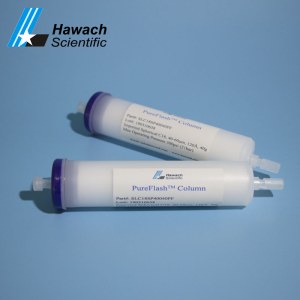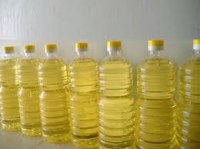How To Select The FLASH Purification Column – Stationary Phase
The FLASH column is the heart of the FLASH purification system, like an engine in a car. If you want to do a good job, you must first sharpen the tools. Choosing the correct FLASH purification column is the most critical part of the whole purification process. And choosing the right FLASH purification column is like choosing the other half of the vast sea of people, tall fat thin, appearance, connotation quality all aspects to carefully consider. Today we're going to talk about what the pure column is all about – the stationary phase.
The stationary phase, also known as fillers, is the core of the spectrum. To determine the stationary phase for FLASH purification column loading, three aspects of the stationary phase are determined in turn: matrix type, surface modification/bonding phase, and matrix parameters.
The substrate
Matrix is a basic material composed of a stationary phase. The common matrix materials are divided into three categories: inorganic materials, organic materials, and composite materials. Inorganic materials include silica gel, alumina, etc. Organic materials are mainly gel and other polymer materials; Composite materials usually refer to inorganic materials and organic materials through hybridization, coating, coating and other means of composite materials.
Silica gel is the most widely used matrix in FLASH purification. Silica gel for chromatography is a porous structure with high mechanical strength and thermal stability, excellent pore structure and specific surface area, and its surface contains a large number of active hydroxyl groups, which plays a very important role in the separation and purification of compounds in the positive phase purification system. At the same time, the surface of silica gel is easy to be modified to form other bonded stationary phases, and there are many kinds of stationary phases modified by silica gel matrix, and the separation and purification effect is much better than that of other matrices.
But silicon substrate with poor stability in alkaline conditions, at the same time, the existence of the hydroxyl groups of some material especially for alkaline substances likely to cause irreversible adsorption, moreover in some applied to the separation and purification of biomolecules samples when nonspecific adsorption on the samples or make samples, sample elution from the chromatogram peak deformation difference and sample recovery rate is reduced.
Alumina matrix has high mechanical strength, good chemical stability, unique selectivity for some compounds, and good complementarity for silica matrix. But the surface modification of alumina is difficult, so it is mostly used in the positive phase purification system and a small amount in the ion exchange system.
Organic matrix is mostly polymer gel materials (such as resin, polystyrene diethylene copolymer, etc.), compared with silica gel has better chemical stability (applicable to the range of pH value can be from 1 to 12), and the sample to be separated from the basic non-denature-reaction, is not easy to produce irreversible adsorption. After modification, it is widely used in the separation and purification of biomolecules such as protein and carbohydrate in ion-exchange chromatography, volume exclusion chromatography, and reversed-phase hydrophobic chromatography. However, compared with inorganic substrates such as silica gel, the mechanical strength of the stationary phase of organic substrates is relatively low, and the separation and purification effect is poor, which limits its application in purification.
The composite matrix is compatible with and neutralizes the advantages and disadvantages of the inorganic matrix and organic matrix, but generally, the corresponding fixed phase of the composite matrix is expensive, so it is seldom used in preparation and purification.
Modification/bonding phase
By modifying the matrix or bonding different groups, different separation types of stationary phases are formed, usually including positive phase, inverse phase, ion exchange, secant, chirality and so on.
A chromatographic pattern in which the polarity of the modified group on the matrix is greater than that of the mobile phase is called positive phase chromatography, and the separation is achieved by the distribution of the stationary phase and the mobile phase depending on the polarity of the sample. In this separation mode, the sample is eluted from the purification column in order of polarity from weak to strong.
Commonly used positive phase stationary phase includes: unmodified silica gel; Silica gel matrix fixed phase such as diol group, amino group, and cyano group; Alumina, etc. The normal phase silica gel stationary phase is mainly used in the preliminary purification of the synthesis of non-polar or medium polar intermediates. The conventional flow systems are n-hexane/ethyl acetate, dichloromethane/methanol, etc. Its advantages are simple purification, simple sample post-treatment; The disadvantage is that the separation performance is not high (compared with inverse-phase fixation), the reproducibility is poor, and the adsorbability is strong and even produces irreversible adsorption to some kind of material.
In addition, some polar groups (such as diol group, amino group, cyano group, etc.) bonded to the positive phase of the stationary phase is often used in the reverse phase condition, for the reverse phase of the stationary phase such as C18 to retain the strong polarity of the compound, can obtain a good separation and purification effect.
The fixed phase of alumina can be divided into three types: acidic, neutral and alkaline. Acidic alumina is generally pretreated with acidic solvents, with weak cationic properties, the surface is easier to retain neutral and negatively charged substances, can not be very good to retain positively charged substances, mainly used in the separation and purification of acidic pigments, aldehydes, acid compounds.
Alkaline alumina is usually pretreated with an alkaline solution, has anion characteristics and cation exchange function, has a strong adsorption effect on polar cation samples, and is mainly used in the separation and purification of alkaline substances such as alkaline pigments and alkaloids. Neutral alumina is not sensitive to the acidity and alkalinity of the sample, so it is mainly used in acid-base unstable compounds such as glycosides, aldehydes, and esters.
A chromatographic pattern in which the group modified on the matrix has a polarity less than that of the mobile phase is called reversed-phase chromatography, in which the sample is eluted in the reverse order of the positive phase: the sample is eluted in order of polarity from strong too if. The reverse-phase fixed phase is mainly the silica gel matrix bonded with different bonded phases, such as C18, C8, C4, C1, phenyl and so on. It is widely used in the purification and purification of natural products, peptides, proteins, and other samples, with excellent separation effect, good reproducibility, long service life, and other characteristics.
A chromatographic pattern of separation based on the Size of the molecular volume (hydrodynamic volume).The SEC of dimensional exclusion chromatography can be divided into GPC (gel permeation chromatography) and GFC (gel filtration chromatography). Currently, the main substrates of GPC have cross-linked PS(styrene-divinylbenzene polymer) and cross-linked PVAC (cross-linked polyvinyl acetate). Different substrates use different organic solvents (DMF, etc.) as the mobile phase. The main matrix of GFC is hydrophilic silica gel, cross-linked dextran, cross-linked polyacrylamide, etc. The mobile phase is mainly water, so GFC is more used in protein purification. The main disadvantage of the size exclusion mode is that the sample load is small and the flow rate is usually low, so the preparation efficiency is poor. The advantages of its simple separation mode and the high recovery rate are its preparation and purification.
Ion exchange chromatography (ion-exchange chromatography) is a separation model based on the interaction of ionic charges on the surface of sample molecules and ionic charges on the surface of chromatographic fillers. The surface of the stationary phase is positively charged, and the anionic exchange filler is reserved. The surface of the stationary phase is a negative charge, cationic reservation is called cation exchange filler, in addition, according to the strength of the ionic bonding state on the surface of the filler is divided into strong ion exchange filler and weak ion exchange filler.
The common surface groups of cation exchange fillers are a sulfonic acid group (strong cation exchange), phosphate group, carboxylic acid group, a phenolic hydroxyl group. The common surface groups of anion exchange packing are primary amine group, secondary amine group, tertiary amine group, quaternary amine group (strong anion exchange packing). However, the resin is usually used as the matrix for preparation and purification of ion-exchange fillers, while silica gel and non-porous gel are more commonly used in analysis due to the consideration of pressure and resolution.
The chiral stationary phase refers to the stationary phase of polysaccharide, cyclodextrin, protein and other derivatives bonded or coated on silica gel and another matrix, and chiral recognition and separation of chiral substances are carried out to achieve the purpose of separation and purification. Because the chiral stationary phase is very expensive, in order to protect the stationary phase as much as possible, the chemical purity of samples is generally required to be relatively high, and the samples are generally preliminarily purified to improve the chemical purity and remove impurities that are easy to damage or adsorb the stationary phase.
Matrix parameters
The matrix parameters include the shape, particle size, and pore size of the matrix, which are selected according to the specific requirements of purification.
Taking the most widely used silica gel matrix as an example, the silica gel matrix used in preparation and purification is usually divided into spherical and amorphous. Amorphous silica gel is cheap, is the first choice for the initial coarse and pure. Compared with amorphous silica gel, spherical silica gel has obvious advantages, with the following advantages: good particle uniformity, stable post-loading column bed is not easy to collapse, low multi-path diffusion effect, high column effect, good separation. However, it is slightly more expensive and is generally used in the purification stage.
Matrix particle size directly affects the flash column efficiency and separation efficiency, the smaller the particle size can reach the higher column efficiency, and choose size to specific separation of the samples, after all the preparation cost to consider, the smaller the particle size of the stationary phase, the more expensive price, in order to achieve the best flash Columns efficiency is usually the smaller the particle size selection of line velocity, the greater the back pressure is higher, so the equipment requirement is high also.
Generally, when the sample is coarse and pure, the fixed phase with large particles is usually selected, while when the sample has high added value and requires high purity and yield, the fixed phase with small particles is mostly selected. Therefore, the choice of fixed phase particle size should be considered from the aspects of cost, sample and purification equipment parameters.
Selection aperture of the porous stationary phase matrix mainly from the molecular volume of the sample to consider (Table 1 summarizes the molecular weight of sample, sample size and the relationship between the recommended aperture), aperture of stationary phase is usually more than three times the size of the sample molecules, to make the sample molecular effective access to the stationary phase hole for full contact with the separation effect. However, for the sample molecules of polypeptides, the pore size of the stationary phase need not meet the above rules due to their long-chain structure. At the same time, the pore size is also related to the specific surface area. If other parameters are the same, the smaller the pore size is, the larger the specific surface area will be, and the size of the specific surface area will affect the separation effect and the loading situation to a certain extent.
To sum up, in the sample preparation of FLASH and purification, the preparation of should according to actual needs, combined with properties of sample, the purity, and yield of the product requirements and the actual situation of equipment configuration and so on, from the matrix, the modified/bonded phase, the matrix parameters considering three aspects, required for final purification of the stationary phase.
How To Select The FLASH Purification Column – Stationary Phase
Contact : Bruce Lu, +86 29 89284429
Good deal: buying from seller
We invite you to read our terms of use. You can also visit our FAQ section and see our information section on the risks associated with counterfeiting.
|
This page is about importers and exporters of How To Select The FLASH Purification Column – Stationary Phase Search in a category : Equipment goods Search in a category : flash, stationary, phase, column, select, purification |
Thursday, July 16, 2015
Quantity : 1 x 40feet - Price : 340$
Density at 20c; 0.916 to 0.923 20c refractive index; 1472-1474 Iodine value; 120-143 Unsaponification; Max 2.5 Free fatty acids; 0.1% max. as oleic acid Peroxide value; 1 Max. (Mcg / kg) Color; Max. 2 Red (5 Lovibond cell) humidity; 0.1% maximum appearance; Clear and bright...
PK - GLOBAL UNIT
- 50000 - Chiang Mai
- +66 6 14 84 85 39
Sunday, July 08, 2012
Quantity : 1 - Price : negotiated
Mobile diving complex executed in double 20 ft marine containers with 60 m diver depth and diving station for operation of 2 working and 1 standing by divers. 1st container Diving complex: 20' marine container with additional door, illuminators and heat insulation, main switchboard...
MSCO
- 183038 - Murmansk
- +78 1 52 48 10 21
- +79 2 16 66 33 86
Tuesday, February 10, 2015
Specifications Cheap used clothing from germany Very New,Very Neat Very Fashion Professional select & Sort Mixed with Famous Brand & New A. Our Factory specializes in selecting and sorting Used Fashion Clothing,Used Jeans ,Used Fashion Handbags,Used School Bags,etc...
commerce
- 26817 - Rhauderfehn
- +4965875122










